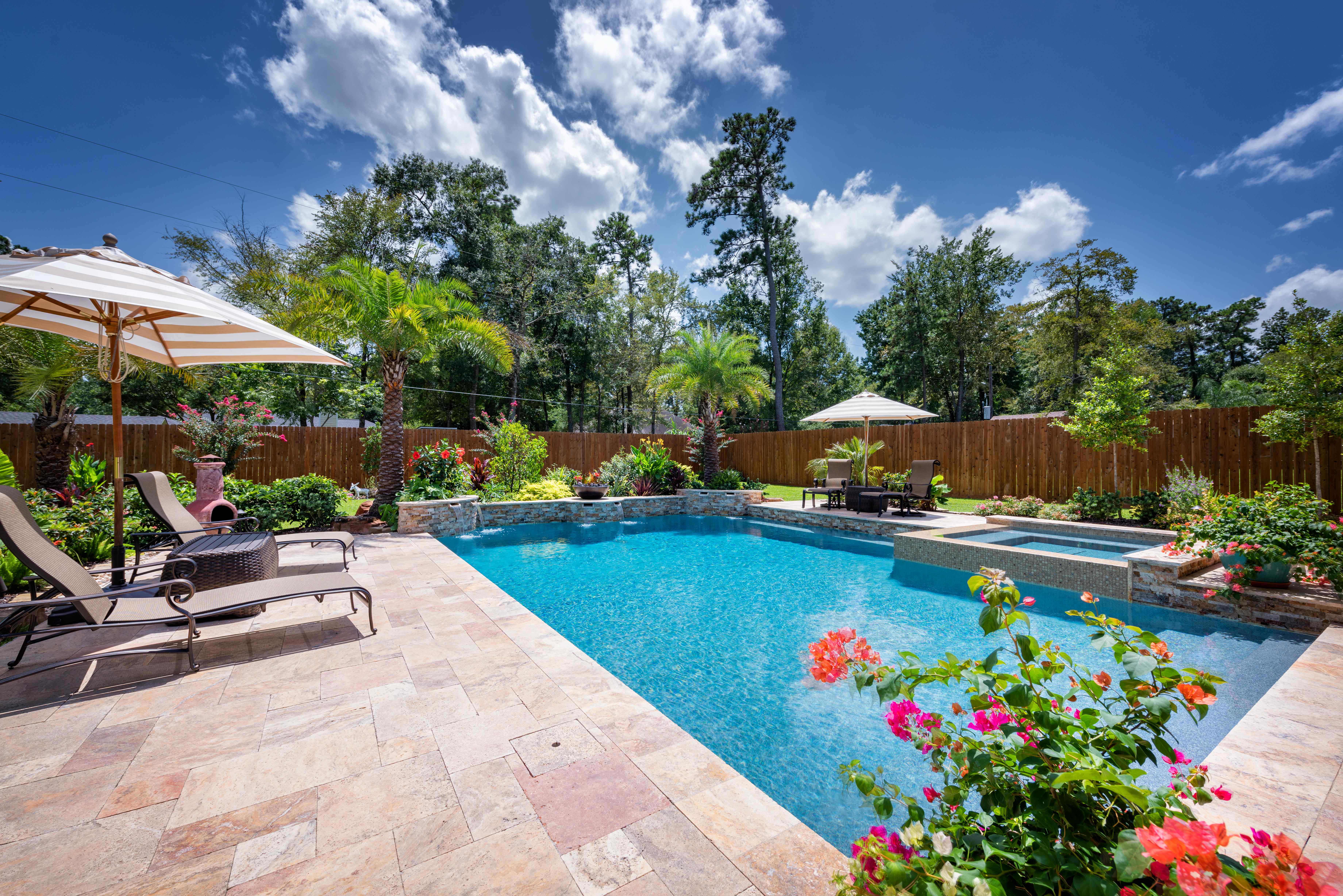Pool Resurfacing vs Pool Replastering: Which Is Better for Your Pool?
Over time, it’s normal for your backyard swimming pool to suffer from a bit of wear and tear.
After all, pools spend all their time outdoors and the diverse Texan elements can take their toll.
Ongoing maintenance can help to reduce this, but sometimes it may be necessary for larger refurbishments to take place.
Pool resurfacing and pool replastering are the two most common ways to refurbish a swimming pool, but which option is best for you?
In this article, the team here at Backyard Paradise Luxury Pools will take a look at both pool resurfacing and pool replastering, examining which type is best for your pool.

What is pool resurfacing?
Pool resurfacing involves removing the top layer of your swimming pool, before applying a brand new finish to its surface that can breathe new life into your pool.
Think of it as a facelift for your pool, and while the process is often undertaken for cosmetic and aesthetic purposes, it can also help to fix damage such as problems with the pool’s shell as well as discoloration, staining, and chalking.
Usually, a wide range of different surface finishes can be used during the process, including plaster, vinyl, quartz, and more.
At Backyard Paradise Luxury Pools, we offer high-quality pool resurfacing services across The Woodlands, Spring & Montgomery, TX.
What is pool replastering?
In contrast, the process of pool replastering involves removing your pool’s bottom layer of plaster, before replacing it with a new surface. The entire bottom of the pool is removed rather than just the surface layer in resurfacing. Pool plaster is the final seal and coating for a concrete pool.
Usually, the existing plaster will be chipped or blasted away before the new layer is added, and any repairs to the pool or its structure can also be carried out along the way.
As well as the style and design elements it can bring, plaster is also an extremely important functional part of a swimming pool due to its non-porous nature. This means it will not absorb the pool’s water.
How is pool resurfacing different from pool replastering?
Both pool resurfacing and pool replastering are great ways to rejuvenate your swimming pool while also enhancing its durability, longevity, and functionality.
Pool resurfacing is the most cost-effective option, and often takes less time than replastering, which means you can get back to enjoying your pool in less time. For these reasons, it is often favored by those who require smaller repairs or maintenance.
Pool replastering, on the other hand, offers a more comprehensive approach. It is considered the better choice for durability, as the process involves removing the entirety of a pool’s surface and not just the top layer. This provides an ‘as good as new’ finish that can restore your pool to its original quality. Typically, this method is preferred when more significant repairs are required.
In terms of what is the best option for you and the needs of your pool, this will depend on your unique circumstances and you should consult with a leading pool company like Backyard Paradise Luxury Pools who’ll be able to advise on the best approach.
Where can I get swimming pool resurfacing services?
At Backyard Paradise Luxury Pools, we can provide all our customers in The Woodlands, Spring, Montgomery, and the wider Houston area with a whole host of pool maintenance and pool renovation services.
This includes quality pool resurfacing that can repair damage and restore your backyard pool to its former glory.
And, for more information on everything we have to offer, contact our friendly and knowledgeable team today.
« Back to Help & Advice